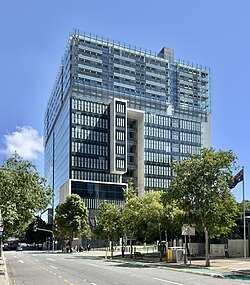
| ||
|---|---|---|
Personal Reign  | ||
This is a list of places, buildings, roads and other things named after Elizabeth II. It is divided by category, and each item's location is noted in the entry.

| ||
|---|---|---|
Personal Reign  | ||
This is a list of places, buildings, roads and other things named after Elizabeth II. It is divided by category, and each item's location is noted in the entry.
Former:




Former:




Former:




Former:


Former:

Former:




Former:
The Queen's Gallery has now become The King's Gallery.